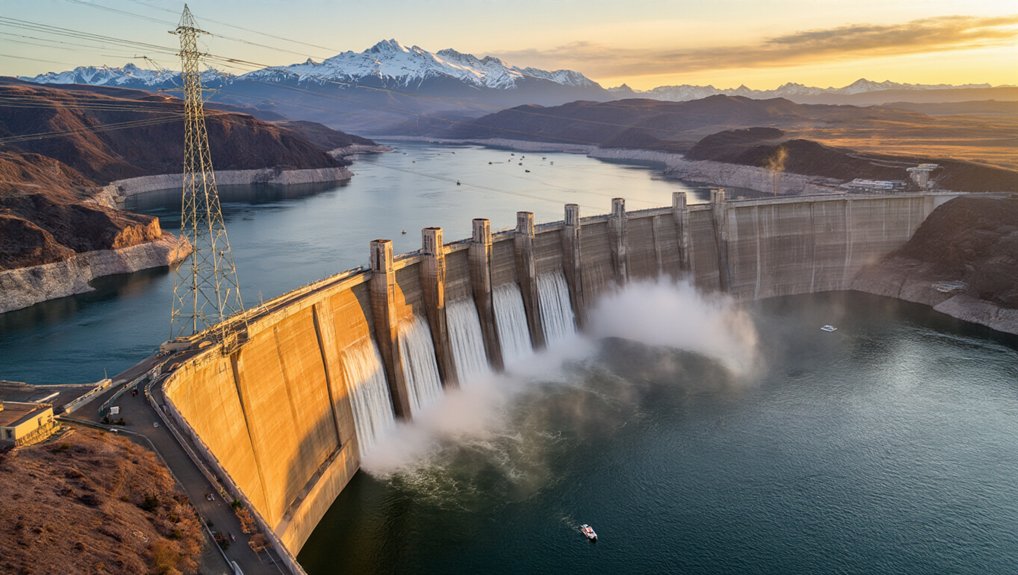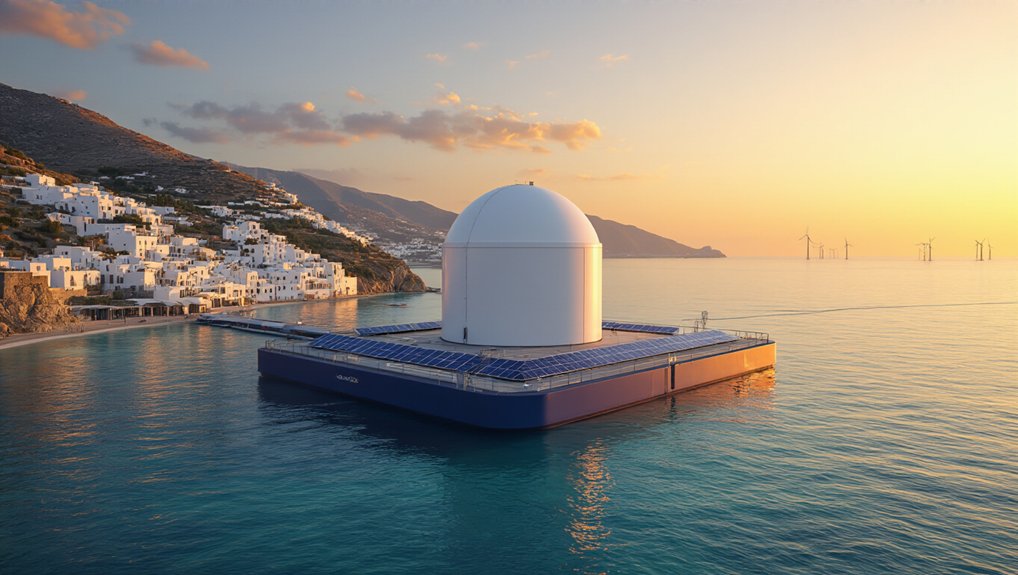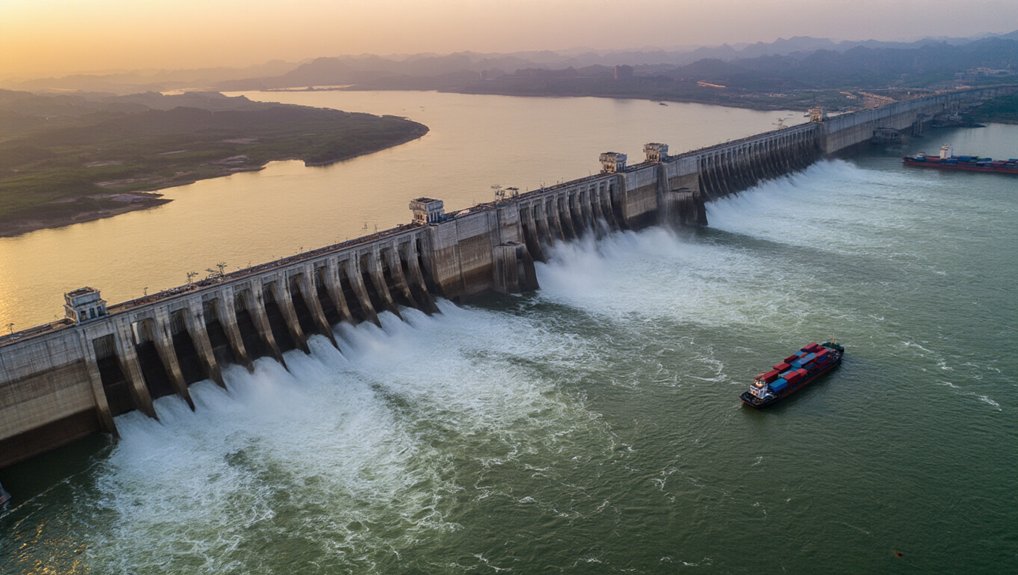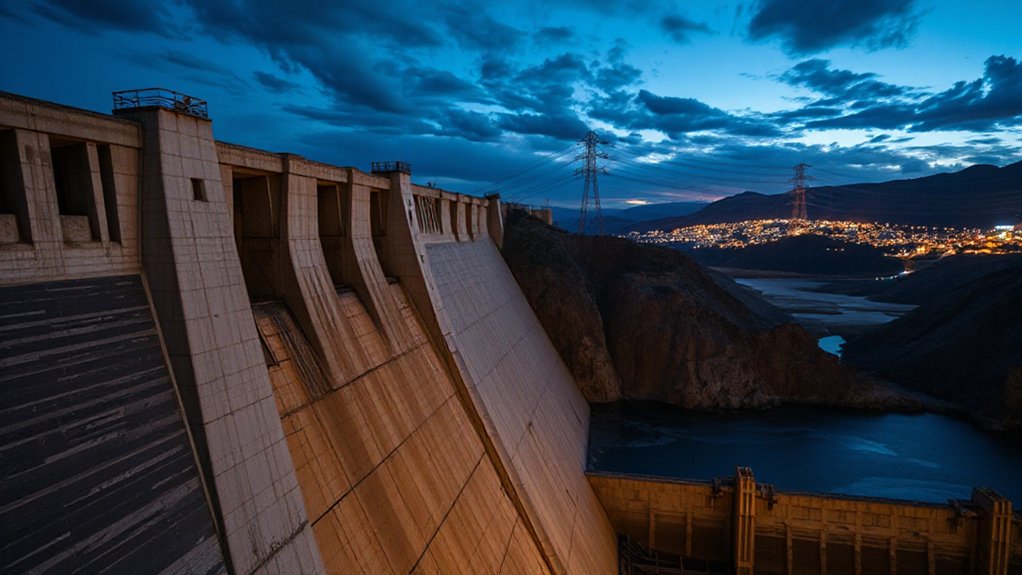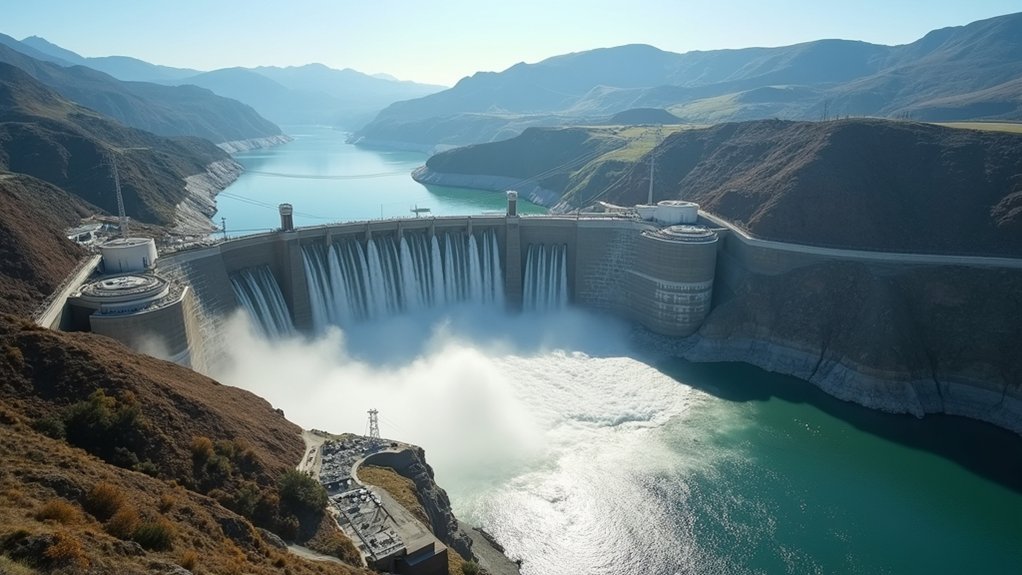A powerhouse. That’s Washington state in a summary when it comes to hydroelectric production. Pumping out 59% of its electricity from rushing water, Washington isn’t just dabbling in hydropower—it’s practically married to it. The state typically generates between a quarter and a third of all conventional hydroelectric power in the entire United States. Not too shabby.
The crown jewel? Grand Coulee Dam. This concrete monster stands 550 feet tall, dwarfing the Great Pyramid and making Hoover Dam look like its smaller cousin. With 6,890 MW of capacity that can stretch to 7,200 MW when pushed, it’s America’s largest hydroelectric facility. Period. The thing powers eight western states plus parts of Canada. Talk about pulling your weight.
Most of Washington’s hydro heavyweights sit on the Columbia River, including the second-place Chief Joseph Dam. Eight federal dams churn out electricity across the state, all managed by the Bonneville Power Administration. They’ve got their hands full.
The Columbia River: Washington’s hydroelectric superhighway, where eight federal dams power the Northwest under BPA’s watchful management.
When Grand Coulee was built, it created nearly 8,800 jobs during the Depression. People needed work; the dam delivered. During World War II, its electricity became essential for making aluminum and plutonium. Kind of important stuff back then. The third power plant addition in 1974 increased capacity to its current impressive level.
Washington residents reap the benefits with the third-lowest electricity rates in the country. But it’s not all rainbows and waterfalls. Recent drought has hammered production—Grand Coulee generated about half its record output in 2024 compared to 2012. Reservoirs in Yakima sit at roughly half their historical average. Mother Nature calls the shots.
Still, the future looks slightly brighter. Overall U.S. hydropower generation should increase by 7.5% in 2025. Below the 10-year average, sure, but progress.
Washington’s hydro dominance represents American ingenuity at its finest. The dam contains nearly 12 million cubic yards of concrete, three times more than Hoover Dam. These impressive structures can operate with high efficiency rates of up to 90%, converting most of the potential energy in flowing water into electricity. Massive concrete walls holding back rivers, spinning turbines, lighting cities. Sometimes the simplest ideas make the biggest splash.
References
- https://www.eia.gov/state/print.php?sid=WA
- https://ohiostate.pressbooks.pub/sciencebites/chapter/environmental-impacts-of-the-grand-coulee-hydroelectric-dam/
- https://cnee.colostate.edu/wp-content/uploads/2021/10/State-Brief_WA_October-2021.pdf
- https://www.nwcouncil.org/history/GrandCouleeHistory/
- https://www.tricitiesbusinessnews.com/articles/hydropower-generation-expected-to-rise-in-2025
